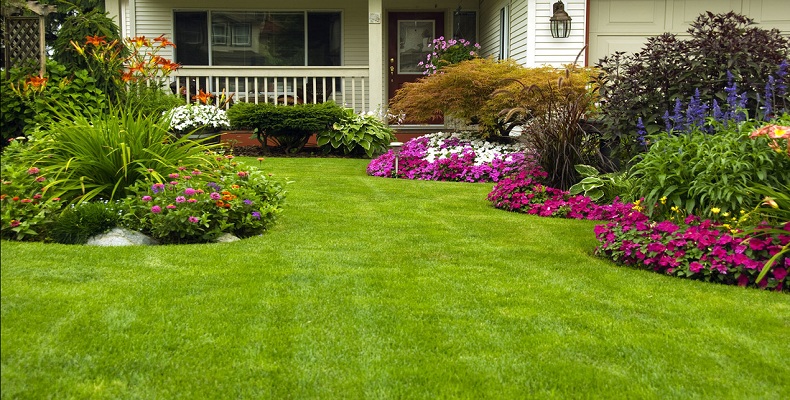The Greatest Guide To Landscape Design
Wiki Article
The Greatest Guide To Landscape Design
Table of ContentsThe smart Trick of Landscape Design That Nobody is DiscussingA Biased View of Landscape DesignNot known Factual Statements About Landscape Design 6 Simple Techniques For Landscape DesignLandscape Design - An Overview
A yard can usually be split into 3 locations: public (the front yard), personal (the back yard), and service (generally the side backyard). The location of activity areas depends mostly on the type of location, the dimension of area needed, the type of task, and the wanted closeness to other tasks and structures.The outside wall surface of your home typically offers as the very first wall surface or starting factor of an outside room. Inappropriate uses need to be separated, and related activities, such as food preparation and dining, must be placed together to make the lawn more effective and enjoyable. When making use of hardscape to produce spaces, utilize building product comparable to that utilized in your house for continuity from your house right into the garden.
Connected rooms. Credit Report: Gail Hansen, UF/IFAS Making use of similar hardscape attributes and duplicating plants pulls the eye around the yard. Crucial points in the process can be stressed with plantings or features that draw attention and urge movement in a specific direction. Moving along the path takes a person from one location to the following and allows the user to have a selection of experiences.
Everything about Landscape Design

For psychological convenience plants are made use of as physical or suggested barriers for personal privacy and safety and security. Physical obstacles block both the sight and access to a space and consist of fencings, wall surfaces and plant hedges.
Physical and implied obstacles. Credit Report: Gail Hansen, UF/IFAS For these factors, the kinds of plants to be made use of (such as trees, hedges, or groundcovers) should be chosen in the early stages of preparation (Landscape Design). Plant kinds are selected for their functional abilities to ensure that their future objective and required room can be considered at the exact same time

Not known Details About Landscape Design
Each plant mass is in front of, behind, or alongside, an additional mass. Number 11. Straight plant layers. Credit: Gail Hansen, UF/IFAS Number 12. Upright plant layers. Landscape Design. Credit History: Gail Hansen, UF/IFAS Duplicating plants within a mass and duplicating masses with comparable plants connects the garden together. The individual plant characteristics need to be considered to effectively layer and mass plants.All plant make-ups start with the main framework plants, the huge, mostly evergreen background visit this site right here plants-such as the trees and huge shrubs. These plants separate or enframe rooms, regulate the size of the space, and supply the starting point for choosing the ideal features of the second layer, midground plants, for massing and infill.
Essential points in the garden should be highlighted by the use of one-of-a-kind plants, distinctive structures, or yard accessories. Noting thresholds or entrances to rooms can be finished with entrances, arbors, and actions, or through the use of special and colorful plants. The type and/or design theme of the garden will certainly often help determine the vital points and how they should be highlighted.
Various other vital locations in the yard are focal factors, which is utilized to aesthetically arrange a designed location. Different perspectives or point of views can reveal different compositions in the landscape that might need a variety of you can find out more focal points.
4 Simple Techniques For Landscape Design

Number 13. Plant types. Credit Rating: Gail Hansen, UF/IFAS After type, appearance is the next leading feature of a plant; rugged, tool and great appearances can be used for comparison and emphasis in the landscape. Type and appearance both trump shade in the yard for many of the year. During certain periods, color will be the most visible attribute of the garden.
The pleasant aroma of plants, the noise of wind in the trees, the noise and structure of water, and the colors and structures of sculptures, pots and yard furnishings all contribute to the experience of the garden. One detail that is often neglected is the effect of light on the aesthetic appeals of the plants.
look these up

Landscape Design for Dummies
It is essential to understand the ultimate fully grown size of plants so they can be put in the right area and spaced appropriately when they are set up. Offering plants area to grow is a difficulty since the common fully grown size is typically based upon ideal expanding conditions and the environmental problems of a site might trigger a plant to grow bigger or stay smaller sized.
Report this wiki page